 The head finally has a working wooden power plug. The first power unit was burned out by soldering a new lead on before it even got the oak round it!
The head finally has a working wooden power plug. The first power unit was burned out by soldering a new lead on before it even got the oak round it!The second stopped working after it was encased in oak. It was not obviously damaged externally. It is likely it was broken inside by vibrations from the sander, as the plug was in situ, when it was subjected to some serious RPM.
See below for the steps undertaken to create this...

A new casing in the vice, being routed out to fit the plug.
Note the guide rail cramped to the bench. This is a guide for the handheld router to keep to a reasonably straight edge

A close-up of the inside of the casing, partly routed.
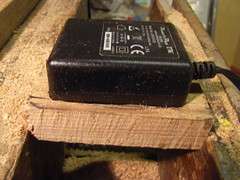
Fitting the plug to test the depth

The casing with routing completed, prior to finishing.
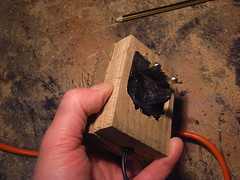
Checking the plug fits with both halves of the casing in place.
As the last unit was killed by vibrations, this one was to be finished without the unit in it though
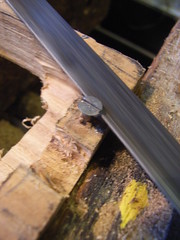
To do this, the two halves of the casing needed to be sanded whilst kept aligned. The plug had done this in the previous attempt, but was not in place in this version.
Tow screws were inserted in one half of the casing to create guide pins to keep the halves aligned whilst sanding.

The guide pin after the screw head has been removed. This is to fit into a hole in the other half of the casing. (there are two of these)

To mark the other half of the casing, the two halves were aligned, then pressure applied in the vice.

This created an indentation, to mark where the alignment hole needed to be drilled.

The completed halves.

The completed casing, ready to be finished
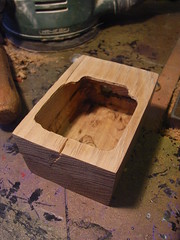
The finished casing after planing and sanding. Unfortunately it cracked when the router bit in a bit too strongly. This cracked was later glued back together
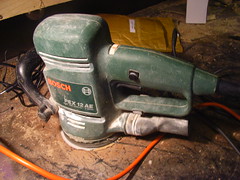
No comments:
Post a Comment